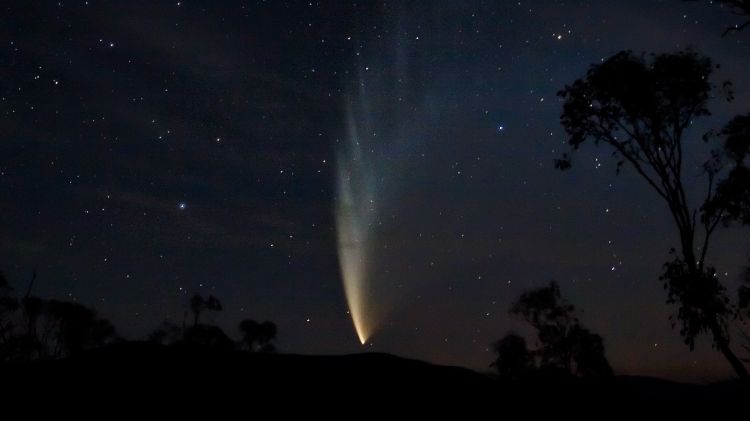AREQUIPA, Peru – The “comet of the century”, the name by which C/2023 A3 Tsuchinshan-ATLAS is known, will reach the closest point to the earthbeing located about 70 million kilometers away, and will be visible to the naked eye.
Discovered in January 2023 by the telescopes of the Tsuchinshan Observatory in China and confirmed by the ATLAS project in South Africa, this comet was nicknamed so due to its exceptional brightness and the rarity of its trajectory.
According to the astronomers, cited by state agency Prensa Latina, the comet will be seen throughout the northern hemisphere as a bright fireball in the dark sky, with a long, extended tail equivalent to the diameter of 42 moons.
At the end of September the star passed close to the sun without disintegrating, a phenomenon known as perihelion.
It is estimated that it would have passed around the Sun for the last time 80,000 years ago, when the Neanderthals were able to observe it.
It has the letter C in its name because it is a non-periodic comet, that is, with an open trajectory estimated at thousands of years.
Tsuchinshan-ATLAS comes from the Oort cloud, at the limits of the solar system’s gravitational field and its place of origin, a huge storehouse of stellar objects from which, for example, Halley’s Comet emerged.
This event also evokes the impressive comets Hale-Bopp and Hyakutake that almost three decades ago left an indelible mark. in the memory of scientists and astronomy lovers.
A comet is a celestial body made up of dust, rocks and ice particles that orbits the Sun following different elliptical paths. Comets are part of the Solar System, along with the Sun, the four inner planets, the four outer planets, their respective satellites, the plutoids and the minor bodies of the Solar System.

















